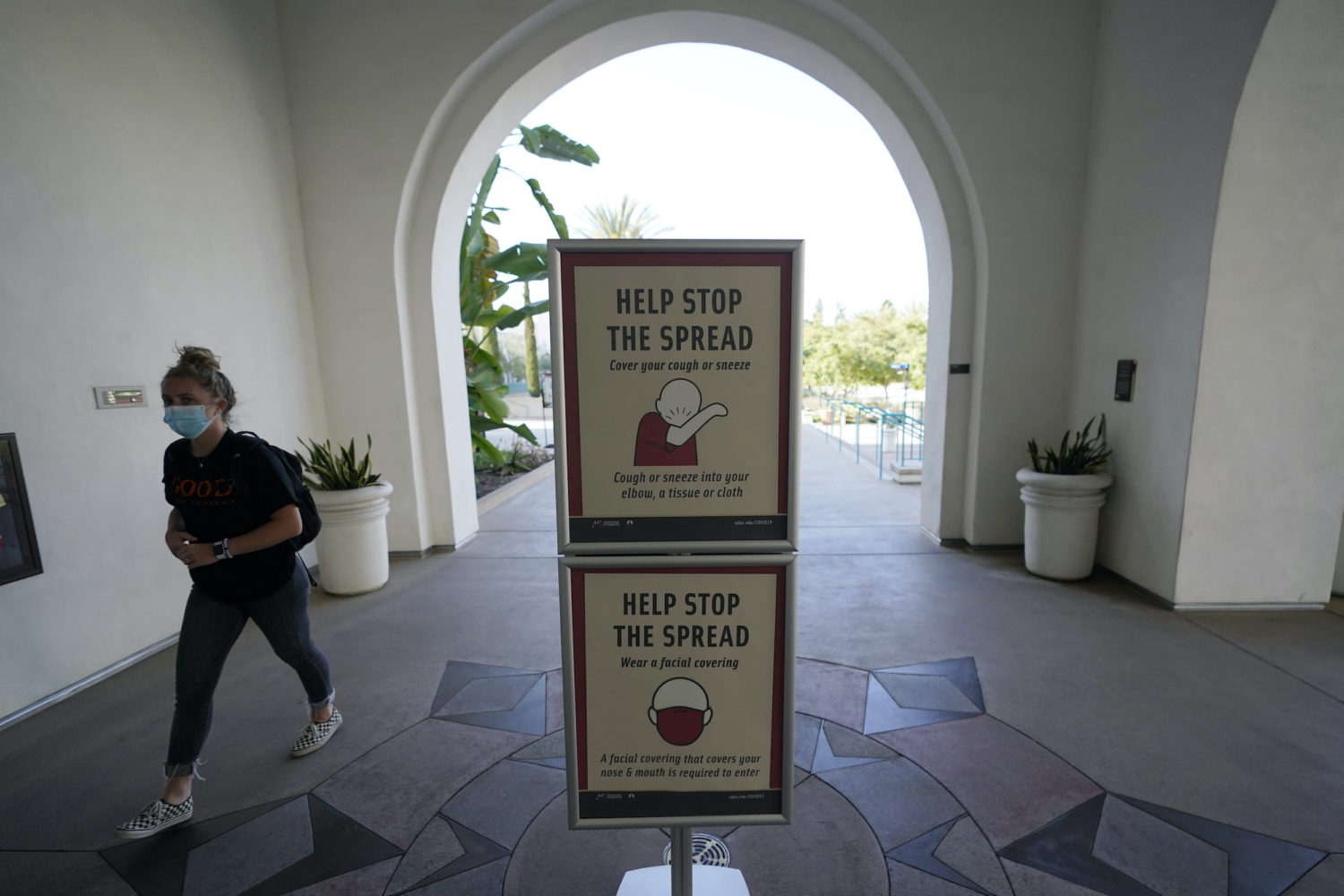The Lead is a weekly newsletter that provides resources and connections for student journalists in both college and high school. Sign up here to have it delivered to your inbox every Wednesday morning.
The national headlines have snowballed as colleges and high schools welcome students back: Cases are spiking in college towns. Some schools quickly reverted to online-only classes and moved students out of campus housing. Others are figuring out how to discipline students who break social distancing guidelines.
It’s overwhelming to keep up with. And student journalists around the country are likely feeling even more pressure when they’re suddenly competing with much larger outlets to report the same stories.
I experienced this sudden attention from national news in fall 2015, when national media descended on the University of Missouri. Campus protests for racial justice and a graduate student’s hunger strike escalated when the football team said they wouldn’t play until the university president resigned. The university president and chancellor eventually stepped down on the same day.
I was the university news editor for The Maneater, MU’s independent student newspaper, that school year. Directing coverage of a sensitive, quickly evolving story was plenty of pressure. But that pressure felt elevated when reporters including Matt Pearce and Wesley Lowery, two national correspondents I follow and respect, were sitting in the same press conferences and writing about the same campus issues.
National attention on your school is an opportunity, not a disadvantage. Here are a few things I learned during MU coverage that also apply to student newsrooms covering the coronavirus.
You know your community best. Think about the sources you already have relationships with: leaders in student government, faculty members, students in various organizations. Journalists coming in from out of town can’t replicate those relationships on the fly.
During the coronavirus pandemic, you’re living the story day in and day out, witnessing class cancellations, the rocky adjustments to remote learning and student discipline. This will give you stories that only student media can tell.
Your audiences are different than national publications’. You’re writing primarily for your local community, not national readers. You probably don’t need to give as much background context on your school or area. Writing for an audience of students, faculty, staff and local community members means you can get into granular issues that a national audience wouldn’t be as interested in.
You’ll be there long after national focus moves onto the next story. An outside reporter might beat you to a story or get the interview with the administrator who won’t talk to you. But in a few weeks when national attention moves elsewhere, your student publication will still be there to serve the community
Pace yourself. Be conscious of your workload and mental health, and take breaks when you need to. Find ways to clear your head, recharge and unplug. (This feels like a good time to thank my editor, Barbara Allen, for understanding when I needed a week off from the newsletter last week!)
One tool we love
The New York Times’ college coronavirus tracker is an excellent way to get national context and see outbreaks around the country. The database breaks down reported cases per school and their surrounding counties. An important note: The data shows all cases that have been reported since the start of the pandemic, not necessarily the number of cases currently active at each school.
What’s your favorite tool that other student journalists should know about? Email me and I might feature it in a future issue.

(The New York Times)
One story worth reading
The Louisville Courier-Journal has covered 100 days of protests over the death of Breonna Taylor. “Our city today is different than it was March 12 — the day before the Taylor shooting,” editor Rick Green writes in a piece collecting reflections from newsroom staff. “It’s also obvious to me we are a different newsroom than we were 100 days ago — beyond the fact we’re all working remotely.”
Opportunities and trainings
- The Education Writers Association’s Higher Education Seminar will be online Sept. 15-16. EWA membership is free and there are scholarships available to cover registration costs.
- Here’s a guide to journalism conferences that have gone virtual during the pandemic.
- Apply for WBUR public radio’s yearlong newsroom fellowship by Oct. 9.
- College students, enter the Reynolds Journalism Institute’s Student Innovation Competition by Oct. 31.
- College students and recent graduates, apply for NPR’s Next Generation Radio Project, a weeklong audio journalism training program (currently held remotely).
- Take a free Poynter webinar on journalism and trauma.
💌 Last week’s newsletter: How our student newspaper advocated for racial justice by examining our college’s history
📣 I want to hear from you. What would you like to see in the newsletter? Have a cool project to share? Email blatchfordtaylor@gmail.com.
Taylor Blatchford is a journalist at The Seattle Times who independently writes The Lead, a newsletter for student journalists. She can be reached at blatchfordtaylor@gmail.com or on Twitter @blatchfordtr.






